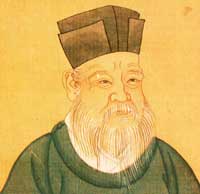 The establishment of the Song Dynasty in 960 AD brought China to one of its heights economically, artistically, and intellectually. The Song Dynasty is historically divided into two phases, Northern Song (960-1127 AD) and Southern Song (1127-1279 AD).
The establishment of the Song Dynasty in 960 AD brought China to one of its heights economically, artistically, and intellectually. The Song Dynasty is historically divided into two phases, Northern Song (960-1127 AD) and Southern Song (1127-1279 AD).
The first emperor of the Song Dynasty adopted a centralized bureaucratic system employing scholar-officials. Consequently, the Song expanded the civil service examination system to provide a constant flow of talent into civil service positions. In time, civil bureaucrats dominated every aspect of Song government and society. This system led to a greater concentration of power in the emperor than had been seen in previous dynasties.
The Song Dynasty witnessed agricultural and technological improvements. Advanced farming techniques increased crop production dramatically. One of the great agricultural achievements in the 11th century was the development of early-ripening rice which allowed peasants to grow two or three crops annually on the same field. Growing cotton was widely practiced during the 12th century. Technology for making ceramics achieved its highest peak in ancient China. The Song Dynasty's major exports were silk, porcelain and tea. The improvement of shipbuilding and the use of the compass allowed for a far reaching and flourishing maritime trade with Asia and the Middle East, on a sea route that became known as the Marine Silk Route. With the development of the economy, the population began to increase and exceeded over one million during that period. Cities, as centers of administration and trade, began to emerge.
The Song Dynasty made remarkable cultural achievements in painting, calligraphy and glazed porcelain. A royal painting academy was established, and painting is regarded as the greatest achievement of Song art. The emperors sponsored many great painters. Birds and flowers, pets and children were the main themes of the Song paintings, and paintings of these subjects became the standards by which later works were judged. At the same time, calligraphy reached a high point. Porcelain also reached the summit of perfection, with beautiful white, green-blue and gray glazes. Song porcelain exerted a strong influence on Korean porcelain.
Neo-Confucianism came to play a dominant role in the intellectual life of the Song Dynasty.  The most influential philosopher of Neo-Confucianism was Zhu Xi whose teaching became the official imperial ideology from late Song times to the late nineteenth century. Neo-Confucianism also came to play a dominant role in the intellectual life of East Asia.
The most influential philosopher of Neo-Confucianism was Zhu Xi whose teaching became the official imperial ideology from late Song times to the late nineteenth century. Neo-Confucianism also came to play a dominant role in the intellectual life of East Asia.
The military in the Song Dynast was not as powerful as it had been in the previous Han and Tang Dynasties . The Song frequently signed treaties that were unfair to them just to end fighting, and temporary peace with nomads was achieved by paying tribute to their enemies.
The Northern Song Dynasty disintegrated due to intrigue by civil bureaucrats, and military weakness. In the early 12th century, a group of nomads conquered the capital and the emperor. This marked the end of the Northern Song period.
In 1127, a Song prince fled across the Yangtze River to Hangzhou and the Southern Dynasty was established there. Despite a precarious military situation, the Southern Song Dynasty achieved a period of prosperity and creativity. Economic and intellectual achievements increased. This dynasty did not collapse internally, as so many others had, but was overthrown by Mongols in 1279.

